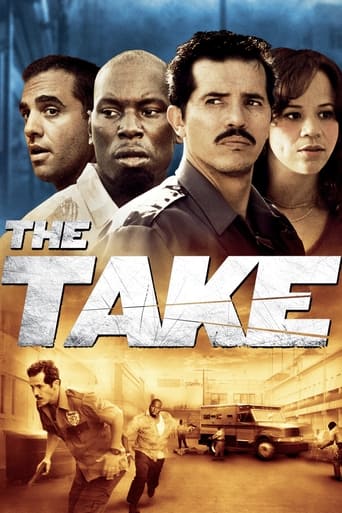

Starts off well without too much BS about family and other stuff we don't care about in a crime thriller, or whatever this was meant to be. It looks real enough, like what a family in this economic situation would look like, something Hollywood never, ever seems to get right. In the big Hollywood version the family would be living like something out of the Brady Bunch.The heist gets ugly and he gets shot in the head. Before you know it he's driving a car and feuding with his wife. Way, way too much "acting" and emotion. Here's my two cents on film making. If something bad happens to someone let's just take it for granted that the loved ones are going to take it bad so there's absolutely no need to show this "anguish" on camera with lots of crap like someone screaming "NNNNOOOOOOOOO!" or whatever.The dude can't distinguish triangles from circles but before you can say "brain trauma" he's driving a car and then becomes a super-sleuth, like with CIA electronic skills.Kind of stupid. And then it devolves into a Chinese Downhill (crap storm) and a foot chase with a couple bodies left in the wake including a cop. The only saving grace is that the criminal is arrested and not shot to hell in the end—something that almost never happens in crime dramas. I defy you to name a crime drama where they arrest the perp in the end.
... View MoreSome of these negative reviews are interesting. Of course you're not wrong, everyone has a right to their own opinion, but come on. One reviewer is complaining about how it's not an action movie, another is complaining about plot holes. You wanna see plot holes? Watch Death Sentence, another revenge film which is rated higher than this despite not making any sense. This film is amazing. The performances are amazing. The story is intriguing and gritty. The ending is really intense. What's with all the hate? sure there are some problems occasionally, but all in all, it's a really, really good movie. I thought it was incredible.
... View MoreThere is a time and a place for shaky, hand-held camera work. This irritating technique continues to be the most over-used in Hollywood. I nearly turned this film off after the first 4 minutes because I was experiencing motion sickness. And this was all while the protagonist was getting up and getting ready for work. Even when you are trying to show action as it might be seen from a live news camera I would still make a case for trying to show the action as it might be seen by the human eye -- steady and focused even when the viewer is moving. My perception is that shaky camera work is used in the same way that too much background music is used -- to compensate for mediocrity in the film itself.I stayed with the film to the end because a lot of others felt it was a good film and John Leguizamo can be counted on for a fine performance. I thought the movie itself was only OK. Story line developed slowly and often tediously to a somewhat satisfying conclusion. I would have rated it a 5 to 6 with better camera work. I'm glad I saw the whole thing but I will never need to see it again.
... View MoreThis is one of the lowest-rated action films, that i found to be highly entertaining, and a gem in my eyes. Its the story of an armored truck driver, who is wounded in a heist, and battles rehabiliation and trying to track down the person who committed the crime. Leguizamo shines in the lead, while Tyrese, although not entirely convincing, does better than his previous work in Baby Boy and 2 fast 2 furious...Meanwhile, Bobby Cannavale was very good here. I thought the music was well incorporated, and Lukas Ettlin did a good job with the cinematography, and the editing was also good. THis is one of the better Hollywood low budget b-movie esquire films i have seen. It may not be Oscar-worthy, but as far as a high- paced action flick, i thought it got the job done better than a lot of films with 3 or 4 times the budget, i would almost forget at times that the films estimated budget was less than a million. --IMDB Rating: 5.2. MY Rating: 9/10
... View More